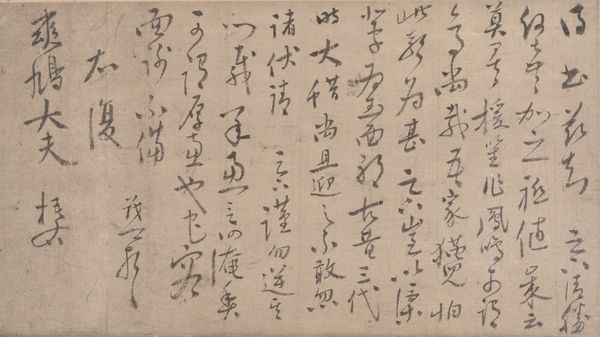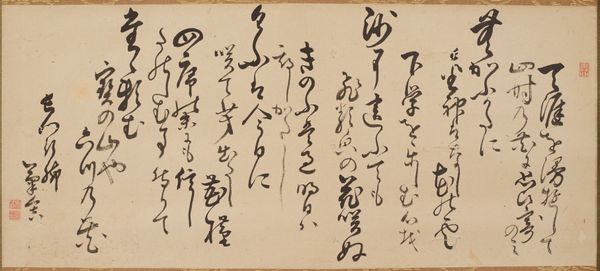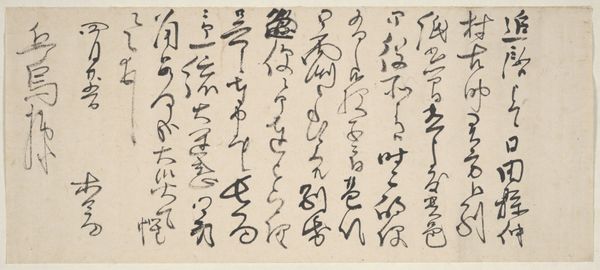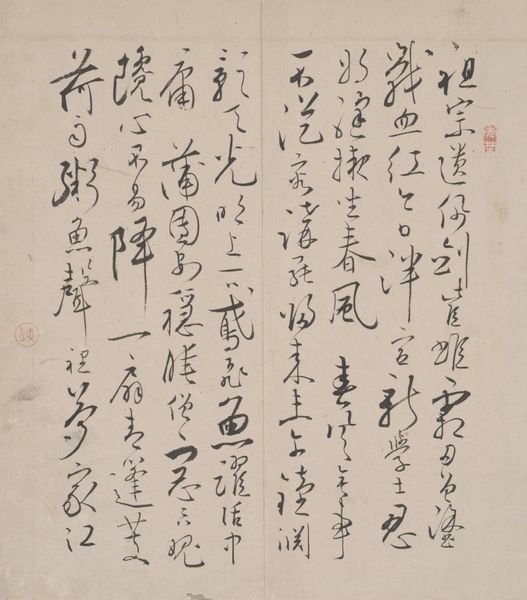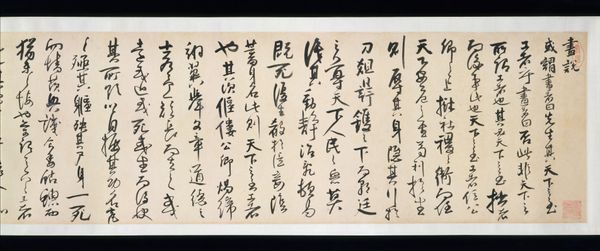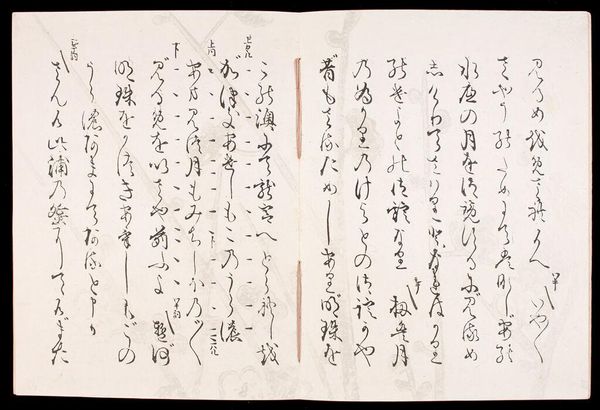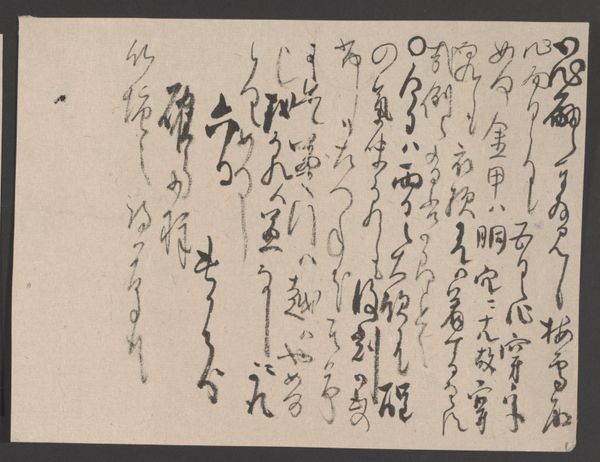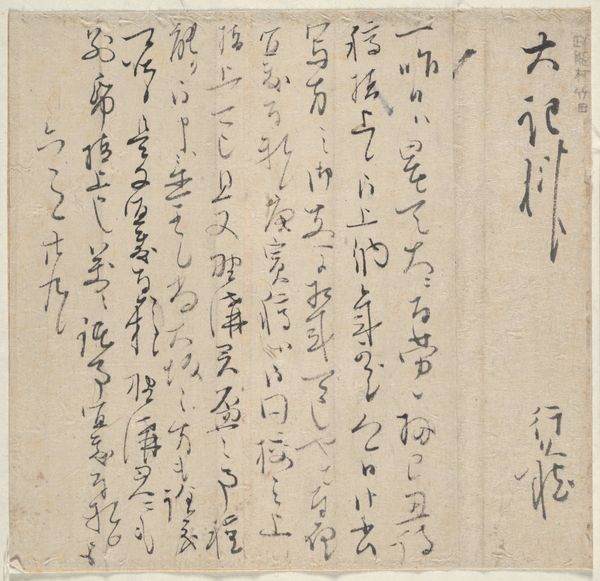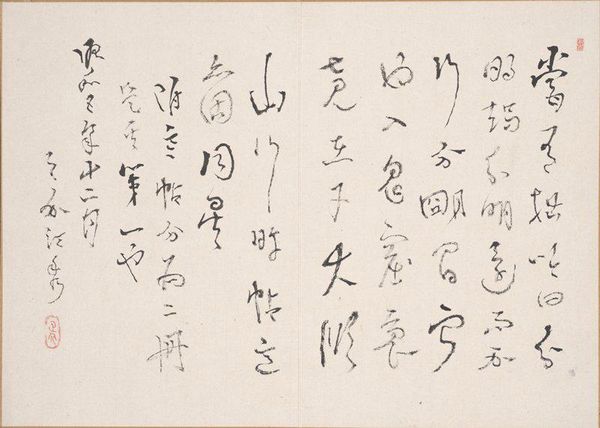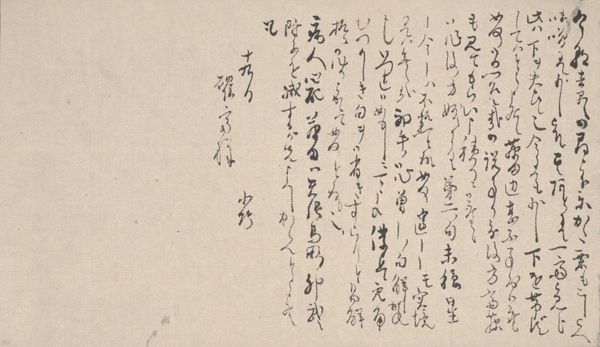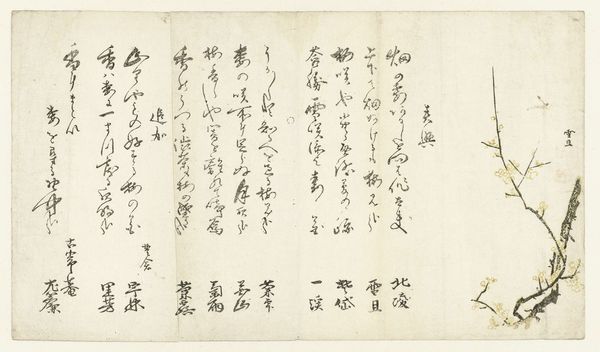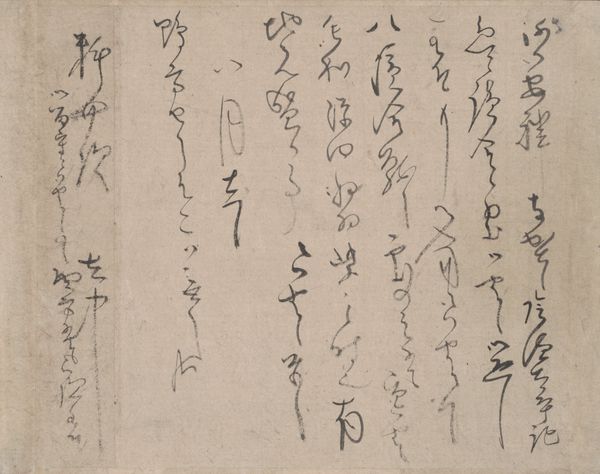
drawing, paper, ink, pencil, pen
#
drawing
#
asian-art
#
paper
#
ink
#
pencil
#
pen work
#
pen
#
calligraphy
Dimensions: Image: 11 × 37 3/8 in. (28 × 95 cm) Overall with mounting: 12 3/8 × 52 11/16 in. (31.4 × 133.8 cm)
Copyright: Public Domain
Curator: Welcome. We are standing before "Letter," an ink and pencil drawing on paper crafted sometime between 1536 and 1612 by Konoe Sakihisa. Editor: It feels like a quiet whisper across time. The delicate strokes evoke a sense of intimacy and a yearning for connection. I can't help but think about the intended recipient. Curator: The composition is meticulously balanced despite its seemingly free-flowing execution. Note the subtle variations in line weight, which create a visual rhythm that guides the eye across the entire surface of the paper. The density and distribution of the characters creates a dynamic interplay. Editor: Beyond the aesthetic elegance of the brushstrokes, I wonder about the historical context. What sociopolitical dynamics framed the creation of this letter? Were there constraints of class or gender dictating the content of such communication during this time? Curator: The very act of calligraphy transforms mundane communication into high art. Observe how the characters transcend their utilitarian function, becoming abstract forms that engage with negative space and surface texture in a purely aesthetic dialogue. Editor: I'm drawn to the possibility that this letter holds secrets—coded messages or veiled emotions relevant to a particular event of that era. How does it participate in historical narratives that often marginalize personal voices and everyday experience? It could reflect political intrigues, class conflict, or simply intimate familial exchange, resisting singular interpretation. Curator: The artist's mastery over brush and ink is undeniable. Consider the nuances embedded within each character and how their unique shapes create micro-narratives within the larger textual space. Editor: And beyond its beauty, it provides valuable clues about the education and societal privileges enjoyed by Konoe Sakihisa and very likely its recipient. Whose stories do these refined artistic practices leave out? Who were unable to write such exquisite missives, and why? This isn’t just pen work but history itself. Curator: I concur. The synthesis of artistry and linguistic meaning contributes to the artwork’s intrinsic value. Editor: Precisely, yet it’s crucial to extend our examination, prompting considerations about the sociohistorical landscape which fostered both this kind of unique work as well as shaped exclusions that persisted during that same time.
Comments
No comments
Be the first to comment and join the conversation on the ultimate creative platform.
